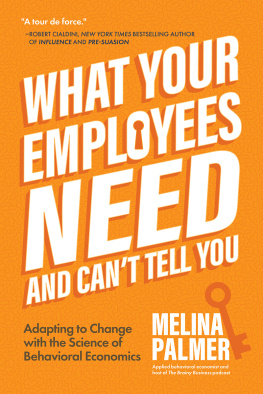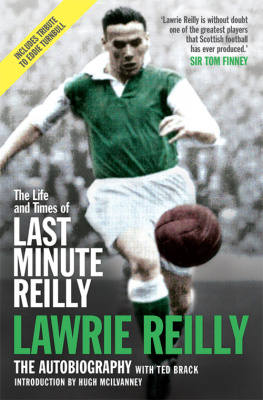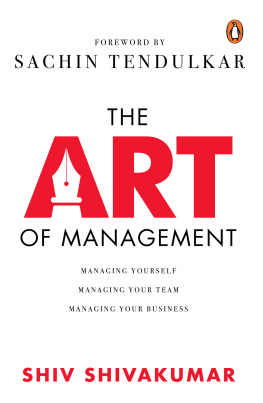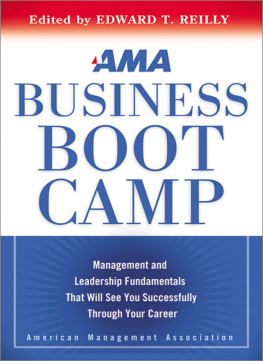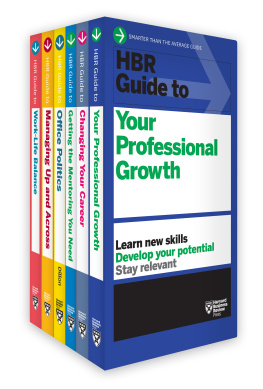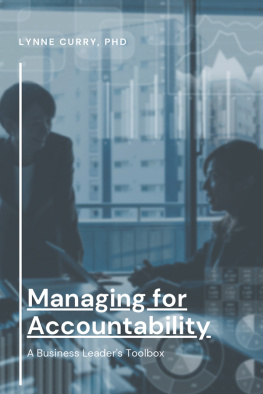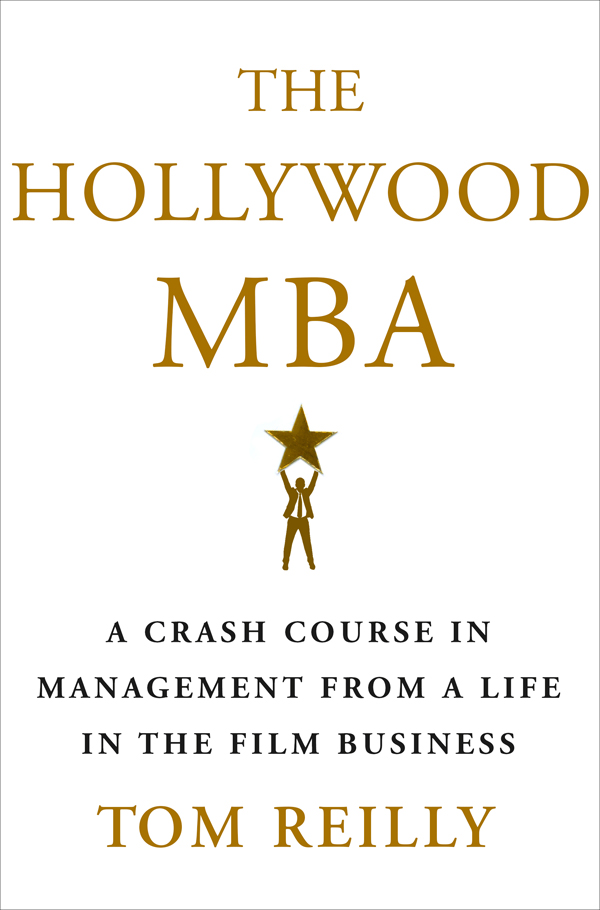Contents
Guide
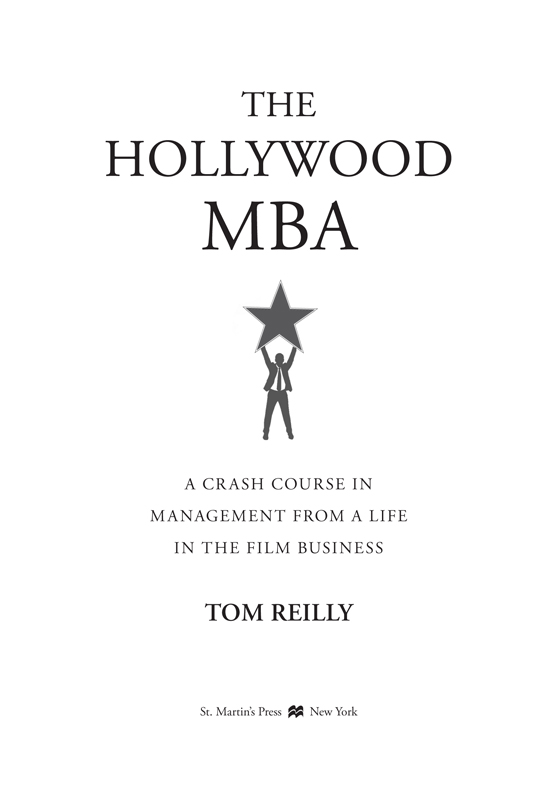
The author and publisher have provided this e-book to you for your personal use only. You may not make this e-book publicly available in any way. Copyright infringement is against the law. If you believe the copy of this e-book you are reading infringes on the authors copyright, please notify the publisher at: us.macmillanusa.com/piracy.
For Kathy
I OWE A huge debt of gratitude to the thousands of filmmaking professionals I spent decades working alongside who taught me so much about the art and craft of filmmaking and the business value of great leadership. I am especially grateful to the many mentors who took the time to help guide me early in my careerBobby Greenhut, Woody Allen, Gordon Willis, Mike Rauch, Charles Okun, Fred Caruso, Mike Peyser, Alan Hopkins, and Laurie Eichengreen, among others.
I also want to give a heartfelt thanks to the many friends and colleagues I met along the wayJim Mazzola, Bobby Ward, the Quinlans and Sabats, Brian Hamill, Joe Hartwick, the Salad sisters, Red Burke, Ron Petagna, Mike Green, Santo Loquasto, and dozens more not mentioned hereyou know who you are. It was a privilege and honor, and you made it fun.
Many thanks to my literary agent, Leah Spiro, at Riverside Creative Management for her unflagging determination and guidance; she has been a superb advocate on my behalf throughout the process of writing this book. And of course a special thank-you to my editor, Tim Bartlett, for his sage insight and wisdomwhich are so greatly appreciatedand to Annabella, Laura, and the rest of the team at St. Martins Press for their input and professionalism.
Finally, Id like to thank my wife, Kathy; my children, James, Kate, and Mackenzie, for their endless love, support, and inspiration; my parents, Ann and Jim, who taught me the value of hard work and education; and my brother, Phil, for always being there. It has been a journey, and I was lucky to take it with all of you.
I MAGINE THAT YOUR phone rings and a start-up company offers to hire you to manage and lead a project that begins immediately. You will have $60 million in operating capital and are being contracted to manufacture a single product . The entire process will take approximately six months. You will be given a blueprint for making this product, but it wont contain precise measurements or detailed instructions, yet your first task will be to use this nonspecific blueprint to draft a very specific business plan, including a manufacturing schedule and a detailed budget.
Note that this product cant be manufactured in a single location, and there is no facility set up to produce it anywhere in the world. In fact, it will have to be assembled piecemeal, possibly in a hundred or more different locationsnot all of which will necessarily be on the same continent. Some component parts of this product will have to be manufactured outside in the elements, and you will need to keep in mind that some of these manufacturing sites may be hard to navigateeven dangerous. They may involve being underwater, out to sea, inside airplanes, or on top of buildings. And each manufacturing site will require all sorts of special tools and materialsfrom concrete and steel to cranes, helicopters, and explosives. Other components of this single, $60 million product will have to be manufactured indoors in one or more makeshift factories that the employees of this start-up company will have to build themselveson the fly.
Manufacturing this single product will require a hundred or more experienced, freelance, full-time, highly skilled professionals to travel to all these locations as a group, as well as several thousand part-time employees, most of whom will be represented by one of ten or more labor unions with requisite mandates to work around, and diverse and sometimes competing and contradictory rulesall of which will be outlined in lengthy contracts. On top of the union rules, there will be local, state, federal, and international laws as well as OSHA regulations to consider to boot, and since all those contractual mandates, laws, and regulations carry weighty penalties if they are violated, even a small miscue or error in judgment can be costly. Plus, some key employees may not speak English, and its highly unlikely that more than a handful of the team you will assemble to work on this project will have worked together beforeso hiccups and glitches and less-than-seamless integration are to be expected.
There will be a precise schedule for manufacturing each of the products component parts, and if you fall behind, even by a few days, you will lose hundreds of thousands of dollars from your budget. Your production costs will run in the vicinity of $20,000 an hour, or just over $300 a minute, so hurry up will be the rule of the day, as any amount of lag time, downtime, or otherwise wasted time will eat away at your budget in a very linear and painfully quantifiable fashion. And unlike many other industries, once the clock starts ticking, neither the dollars nor the days will be recoupable .
As with just about any other manufactured good, the ultimate success of this enterprise will depend on the quality and commercial viability of the finished product, which means that there will be a constant battle between the technical and creative quality of your output, the speed of production, and dollars spenta set of dynamics that will lead you, as a manager, to spend an unhealthy amount of time thinking about efficiency as it relates to even minuscule segments of time.
Additionally, since you will be manufacturing a single, $60 million product , there will be a bevy of overseers, many of whom will be in offices thousands of miles away and have little idea how to manufacture this product themselves. Unfortunately, that fact will not deter them from frequentlyand forcefullyoffering their opinions as to how you should proceed; after all, theyve put a lot of eggs (dollars, reputations, and careers) in one basket (you and your team). Be prepared that these overseers will getand perhaps rightfully sodemanding and volatile as problems arise, so plan on doingand listening toa lot of explaining, justifying, negotiating, and manipulating. Its a complicated, stressful relationship; you may be the one tasked with leading the team in manufacturing this product, but you are spending their money to do so.
As with most start-ups, the hours will be brutal. As a minimum, twelve to fourteen hours a day should be expectedand not all of them will be during daylight hours or close to home, so virtually everyone involved will be sleep deprived, physically drained, and mentally fatigued for most of the process, as well. If this sounds a bit extremeeven crazyits because it is. And thats precisely what makes this $100 billion global industry such a great source for management and leadership case studies.
The single $60 million product I am describing is a feature filma major motion pictureand the blueprint that you were given was the script.
MacArthur Causeway Bridge, Miami Beach
10:00 P.M.
O NE NIGHT IN 1994, I found myself standing all alone in the middle of the shut-down MacArthur Causeway, a six-lane highway that connects the city of Miami Beach to the mainland via a double-leaf drawbridge. As I was looking out over Biscayne Bay and the Miami skyline, reflecting on what we were about to do and the role I would play in it, I was thinking that there isnt another product that is manufactured with the same level of fragmented, incremental, and synchronized live effort than a major motion picture. It was day six of a tough car chase sequence that was about to culminate with an open bridge jump for the Warner Bros. picture Just Cause starring Sean Connery; a film budgeted at $60 million with fifty-three shooting days spread out between a number of locations in Florida and a few in Cambridge, Massachusetts. We had been shooting the previous five nights using more than twenty stunt drivers and stunt doubles as the driver of the lead vehicle tore through the streets of Miami Beach in a tricked-out car weaving in and out of oncoming traffic at high speed, driving on the wrong side of the road along a meticulously planned route that went from the Eden Roc hotel, headed up Collins Avenue, and then onto the MacArthur Causeway.


